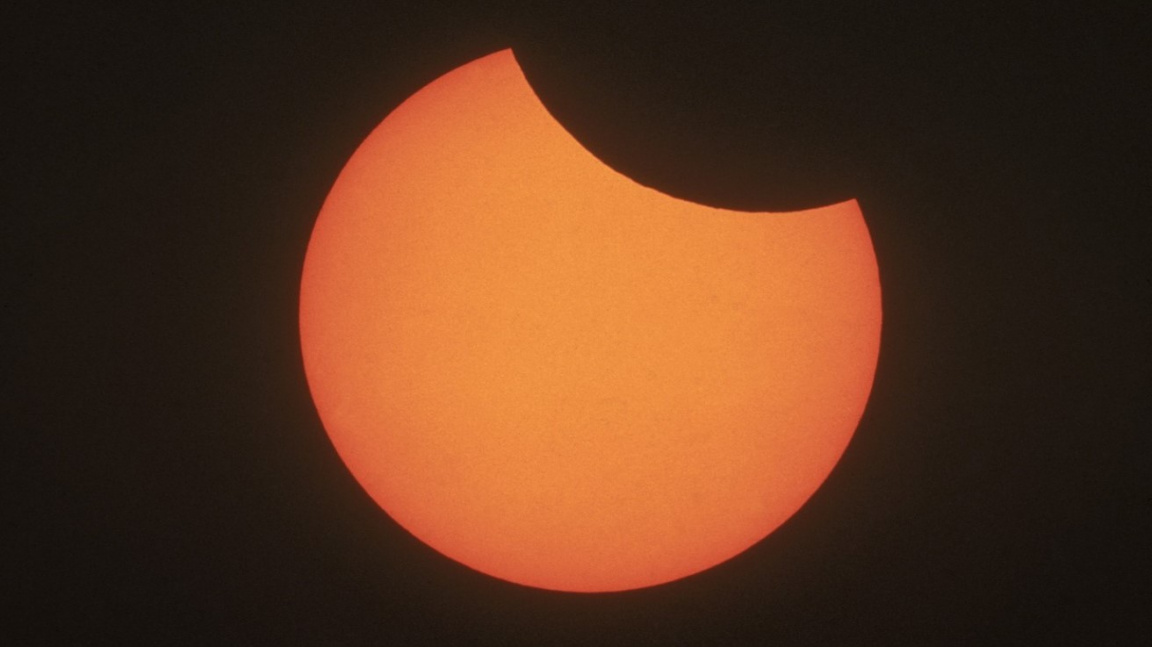The celestial dance of the moon and sun is about to take place. You will see him after six long years
Part of the dark lunar disk will appear before the Sun. It will look as if the Moon has bitten into our star.
The moon covers a piece of the Sun shortly before the summer solstice. This situation will occur on Thursday, June 10, around noon (between 11:44 and 13:36 Central European Central Time).
At this time, if the sky is not closed by a curtain of clouds, you will be able to watch a partial solar eclipse. It will be the first eclipse in six long years, so you should not miss it.
In front of the Sun you will see part of a dark moon disk. It will look as if the moon has bitten into the sun.
The maximum of this phenomenon occurs at 12:39, when the Moon covers almost a fifth of the solar disk (17 percent) and the intensity of solar brightness decreases.
There is no eclipse like an eclipse
The phenomenon we will see arises when the Moon is in a new phase, otherwise a new moon. At that time, the part of its surface facing the Earth is not illuminated by the Sun.
The condition of the eclipse is that the Moon is on a straight line between the Sun and the Earth and, when viewed from the Earth, covers the solar disk or part of it.
When the Moon covers the entire Sun, it occurs total eclipse. If the Moon is further from the Earth in its eccentric orbit during the eclipse, it is angularly smaller and the Sun does not cover the entire surface. Then we watch annular eclipse Sun. Our star will form a fiery circle around the moon from eclipse. In the sky, it looks as if our planet’s natural satellite is on fire.
Types of solar eclipses. | source:
Profimedia
In both cases, the eclipse is observable only in a narrow band on Earth, where the moon’s shadow moves at high speed. We see on most of the Earth partial eclipse. The eclipse of the Sun is greater the closer the observer is to the belt of a total or annular eclipse.
The previous partial solar eclipse in our territory occurred on March 20, 2015. We will be able to watch the next one in October 2022. And we will wait for the next total eclipse until October 7, 2135.
And if you want to enjoy an annular eclipse, head to northeastern Canada, north of Greenland, or eastern Siberia, where you could enjoy it for four minutes on Thursday. In the following video, these areas are highlighted in red. The time is given in UTC (Coordinated Universal Time), which is two hours backwards compared to Central European Summer Time.
source:
NASA
The shadow moving across the image, as you may have guessed, shows where at least a partial eclipse will be visible.
Sunglasses are not enough
You can safely observe the eclipse in the observatories through large astronomical telescopes. If you opt for a separate observation, keep that in mind the uncovered part of the Sun will be an intense source of light and without the use of protective equipment you can (even permanently) damage your eyesight.
“We therefore recommend using special goggles or foil for observing eclipses (ordinary sunglasses are not enough), or a welding filter of grade 13 and higher. You can also observe the eclipse with a small telescope, but then it is necessary to apply an appropriate filter in front of the lens. However, never look directly at the Sun through a telescope, ”advises experts on the Astro portal.
– .


